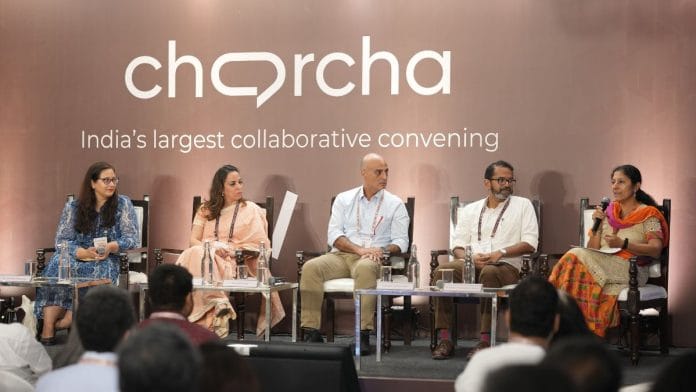Collaboration is increasingly recognized as a vital strategy in the quest to address pressing social challenges. It’s easy to see the attraction. Society is grappling with an array of issues spanning health, education, livelihoods, gender equity, and climate resilience (amongst others). Individual action—no matter how well-intentioned—risks being dwarfed by the complexity and scale of the problems faced.
Philanthropic collaboratives offer a different pathway to achieve large-scale systems change. Arising in part from funders’ desire to pursue new ways of giving, collaboration can amplify the reach and effectiveness of every rupee spent, accelerating progress, and setting the stage for sustainable, long-term impact.
That’s why philanthropic collaboratives in India have grown steadily in number and impact, according to research by The Bridgespan Group, building on pooled resources, aligned missions, and collective expertise. And that’s why we’re taking steps to help collaboratives be more effective.
Also read: India is 5th biggest economy, ranks 143rd in per capita income—charcha 2024 will find solutions
The benefits of collaboration
A philanthropic collaborative, which we define as having been co-created by three or more independent actors—including at least one philanthropist or philanthropy—is an entity that pursues a shared vision and strategy for achieving social impact, using common resources and prearranged governance mechanisms. This valuable mix of diverse skills, capital, and people helps to defray risk and bring in new ideas. Multiple partners work together to build on shared insights and key learnings and co-develop solutions across different focus areas.
Collaboratives have promising potential to accelerate progress on India’s development agenda. In our survey on collaboratives, more than 70 percent of respondents strongly agreed that collaboration enables them to make more progress against India’s large, complex social challenges. They can tackle complex, intersectional, and systemic issues, demonstrating progress over the long term, albeit often in non-linear increments.
Considering this, it’s not surprising that leaders in the space are increasingly engaging with the how and why of collaboration as a means to unlock scale and capital, build field capabilities, and support systems change in a meaningful way.
Also read: Collaboration is key for Viksit Bharat. charcha 2024 provided a platform for it
Challenges to collaboration
At the same time, philanthropic collaboratives take time to take root. Partnering organisations must learn how to work together, whilst also learning how to raise funds and grow programmes.
Whilst the number of collaboratives in India has trebled between 2020 and 2023, and the capital invested has increased five times over the same period, our research found that less than a third of collaboratives in India are anchored by domestic capital, either from corporate social responsibility (CSR) organizations, domestic foundations, or wealthy Indians. It’s worth focusing on the reasons why domestic investment is holding back.
In our conversations with funders, we often hear three reasons for their hesitancy. The first is that the process of discovering collaborative opportunities and vetting partners has few starting points or guideposts. Indeed, among survey respondents from organizations that haven’t engaged in collaboratives, 55 percent reported not having come across an attractive opportunity despite the willingness to collaborate.
Second, inertia leaves funders comfortable with the status quo, even if they intellectually understand the benefits of collaboratives. Of the survey respondents from organizations not engaged in collaboratives, 36 percent highlighted this as a reason for not investing.
And third, some funders prefer to be more visible as contributors than collaboratives typically afford, and they also like to see measurement, evaluation, and learning (MEL) systems in place. This hints at the organisational complexities of collaboratives, with 70 percent of organisations operating as backbone organisations for collaboratives citing the effort to conduct MEL as a major challenge.
Encouragingly, our experiences working with collaboratives on bold bet initiatives in India suggest these challenges are surmountable. To this end, we’re working collaboratively with a few partners to launch a unique Collaborative Resource Hub to serve as a support for investment-ready philanthropic actors to advance on their collaborative journey.
We see it focusing initially on three enabling activities. The first is to help with the discovery of mission-aligned partners interested in high-impact collaborative opportunities. The second is to assist with early-stage conceptualization and strategic design to help collaboratives form. And the third is to disseminate best practices related to backbone organisations, MEL, and good governance, amongst other things.
In this way, the aim is to enable more actors from the philanthropic ecosystem to give towards greater social impact, building the momentum to move from intention to action.
To know more, visit charcha 2024.
Anant Bhagwati is a Partner, The Bridgespan Group and Akshay Gambhir is aSenior Manager, The Bridgespan Group. Views are personal. ThePrint is a media partner for charcha, organised by The/Nudge Institute.






